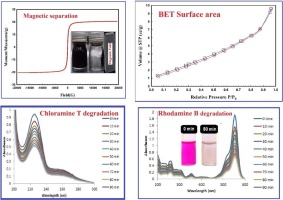
Nanostructured Mg substituted Mn-Zn ferrites: A magnetic recyclable catalyst for outstanding photocatalytic and antimicrobial potentials
With recently increasing the environmental problems and expected energy crisis, it is necessary to synthesis a low-cost, efficient, and UV-light responsive photocatalyst for contaminants’ degradation. The nanostructured spinel ferrite Mn0.5Zn0.5-xMgxFe2O4 NPs (x = 0.0, 0.125, 0.25, 0.375 and 0.50) were synthesized via the sol-gel method. The crystallite size was lied in nano regime ranging from 21.8 to 36.5 nm. The surface chemical composition of the Mn0.5Zn0.5-xMgxFe2O4 NPs was investigated via XPS analysis. Mossbauer spectra showed that the peaks were shifted to higher values of the maximum

Nanocomposite matrix conjugated with carbon nanomaterials for photocatalytic wastewater treatment
The problem of hazardous wastewater remediation is a complicated issue and a global challenge. Herein, a layered Co0.5Ni0.5Fe2O4/SiO2/TiO2 composite matrix was prepared and incorporated with three carbon nanomaterials having different dimensionalities, carbon dots (C-dots, 0D), single-walled carbon nanotubes (1D), and reduced graphene oxide (2D), in an effort to create effective photocatalytic nanocomposites for chloramine-T removal from water. Microstructural analyses confirmed the formation of nanocomposites and revealed their chemistry and structure. Elemental mapping revealed a uniform
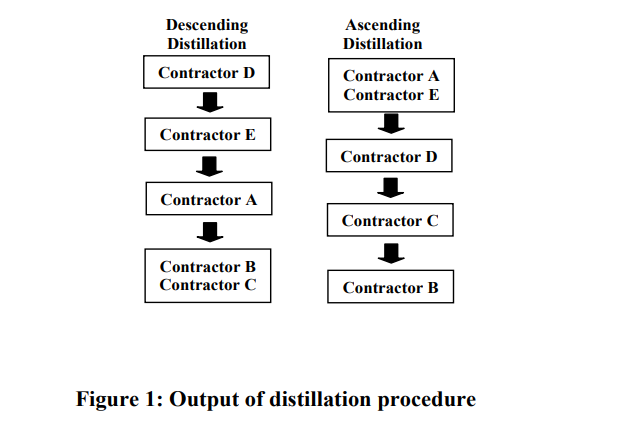
An application of ELECTRE III to contractor selection
Contractor selection is carried out in order to choose a competent and capable contractor to do the work. To help in this selection, baselines are established to ensure that the contractors have the required skills, resources, and abilities to execute the project. Contractor selection is a multiple criteria decision making wherein several criteria are required to be evaluated simultaneously. This paper proposes a decisionmaking model for contractor selection utilizing ELECTRE III modeling. The steps of ELECTRE III model include; estimation of concordance indices, estimation of discordance
Analytical Markov model for slotted ALOHA with opportunistic RF energy harvesting
In this paper, we investigate the performance of an ALOHA random access wireless network consisting of nodes with and without RF energy harvesting capability. We develop and analyze a Markov model for the system when nodes with RF energy harvesting capability are infinitely backlogged. Our results indicate that the network throughput is improved when the conventional nodes are underloaded. On the contrary, when all types of nodes have finite backlogs, we numerically demonstrate that the network throughput and delay are improved when the overall system is overloaded. We show that there exists a
Towards evolving sensor actor networks
Sensor Actor NETworks (SANET) represent a major component of ubiquitous service environments promising interesting solutions to a wide range of problems. Despite the obvious increase in the research activities proposing architectures and protocols for SANETs, we are still no where near the production of industrial-grade SANET software that can be relied upon for mission critical applications. The cost of programming, deploying and maintaining SANET environments is still highly prohibitive due to the lack of industrial tools capable of realizing adaptive SANET software in a cost effective way
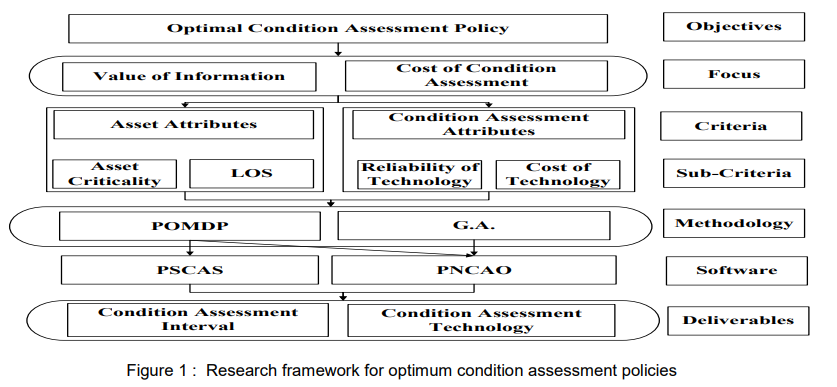
Optimizing budget allocation for condition assessment of water and sewer infrastructures
Much research has focused on the development of optimal strategies for rehabilitation and replacement of water and sewer infrastructures. Condition assessment is an integral component in any asset management program for assessing the asset physical condition. Determining the condition of buried infrastructure tends to be cumbersome, costly and error-prone. As such, decision makers must balance the value of obtained information through condition assessments with the cost of obtaining this information. Such decisions must balance between conflicting needs and need to consider the sought level of
Application of nano waste particles in concrete for sustainable construction: a comparative study
Nano particles contribute as a partial substitute in the production of eco-friendly building materials. This research presents a quantitative assessment of the sustainability effect of partially replacing cement in the green concrete mix with two types of nano-waste particles. The assessment is achieved using two weighing criteria developed by a Sustainable Decision Support System (SDSS) model. This assesses the alternatives using scoring systems based on both the Life Cycle Assessment (LCA) technique and Multi-Criteria decision analysis method. Ten sustainable aspects comprising four
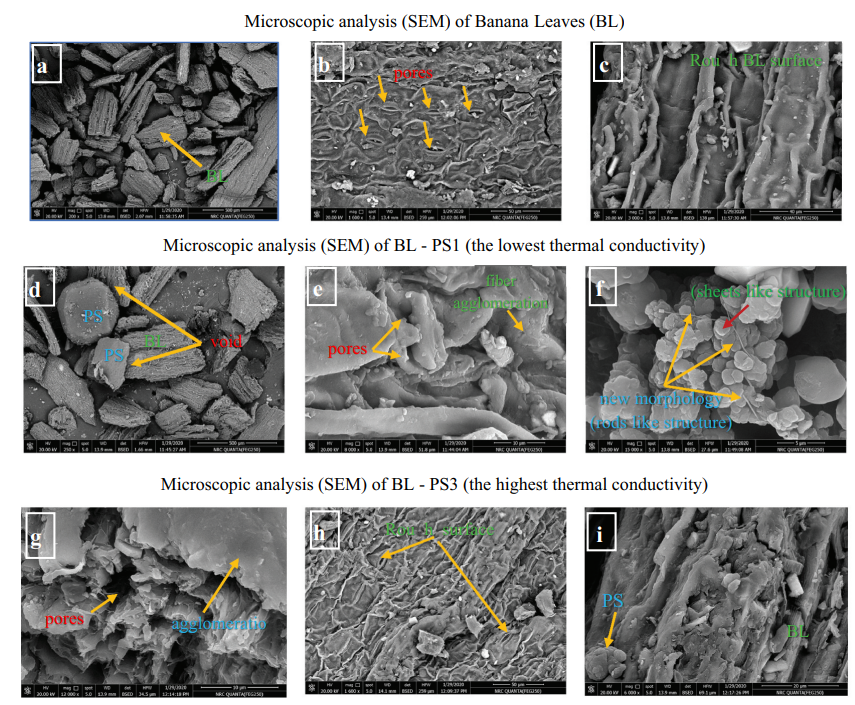
Bio-composite Thermal Insulation Materials Based on Banana Leaves Fibers and Polystyrene: Physical and Thermal Performance
Thermal insulators have a crucial role in reducing the operational building energy. They are commonly fabricated from petrochemical materials that mostly cause negative environmental impacts. This study aims to develop banana leaves-polystyrene composites (BL-PS) as a sustainable and low-cost thermal insulator. The BL powder was mixed with PS in different weight ratios (90:10, 80:20, 70:30, and 60:40). Thermal conductivity, electrical conductivity, SEM, XRD, FTIR, TGA, and DSC were carried out on BL and BL-PS composites that were prepared with 10 wt.% of PS powder (BL-PS1) and 30 wt.% of PS
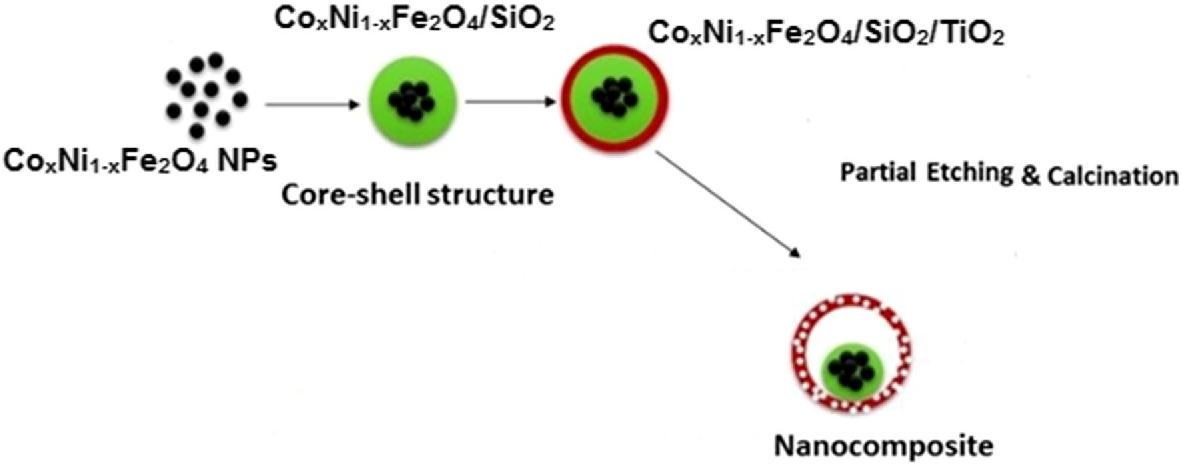
Layer-by-layer preparation and characterization of recyclable nanocomposite (CoxNi1−xFe2O4; X = 0.9/SiO2/TiO2)
Titanium dioxide (TiO2) nanocomposites have been extensively employed in many fundamental optoelectronic and photocatalytic applications due to their outstanding optical, electronic and chemical properties. In the present work, we introduce a simple layer-by-layer approach to design a magnetic TiO2 nanocomposite that could be easily recycled using an external magnetic field without affecting its quantum efficiency. The crystallinity, size, surface area, stability, morphology, purity and other optical, thermal and magnetic properties of the composite have been investigated. Surface topology
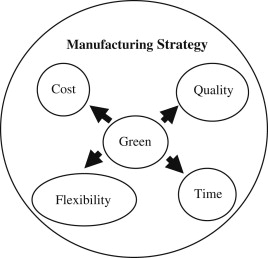
A system model for green manufacturing
Manufacturing systems evolution is afunction in multiple external and internal factors. With today's global awareness of environmental risks as well as the pressing needs to compete through efficiency, manufacturing systems are evolving into a new paradigm. This paper presents a system model for the new green manufacturing paradigm. The model captures various planning activities to migrate from a less green into a greener and more eco-efficient manufacturing. The various planning stages are accompanied by the required control metrics as well as various green tools in an open mixed architecture
Pagination
- Previous page ‹‹
- Page 4
- Next page ››
